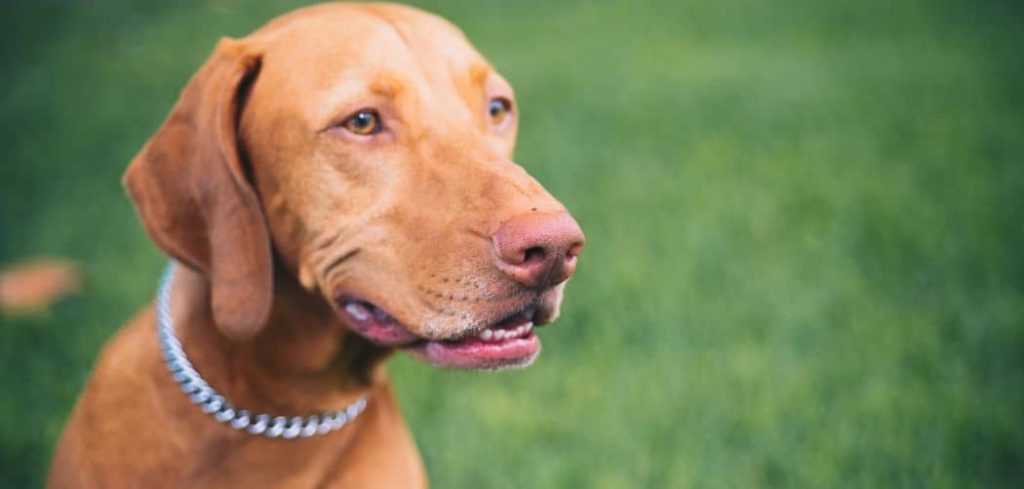When your dog is vomiting yellow and not eating, can be concerning.
While the yellow color may look dramatic, it’s typically caused by bile—an acidic fluid produced by the liver to aid digestion.
We outline the common causes of this and when to seek veterinary care for your dog.
Dog Vomiting Yellow and Not Eating: Why It Happens
When your dog is vomiting yellow and not eating, it’s usually a sign of bile reflux, gastritis, pancreatitis, foreign body ingestion, or even systemic disease affecting organs like the liver. The vomiting of yellow liquid indicates the presence of bile, which irritates the stomach lining when there’s no food present.
If your dog avoids eating while continuing to vomit yellow fluid, it’s a sign that their digestive system is under stress.

Dog Vomiting Yellow and Not Eating: Common Causes
1. Bilious Vomiting Syndrome (Empty Stomach Syndrome)
This is one of the most common reasons dogs vomit yellow fluid.
When your dog’s stomach is empty for too long, bile from the small intestine can flow into the stomach and cause irritation.
This usually results in early-morning vomiting and a temporary loss of appetite.
Dogs affected by bilious vomiting syndrome often benefit from being fed smaller meals more frequently throughout the day to prevent long fasting periods.
However, if vomiting continues or your dog won’t eat afterward, further evaluation is necessary.
2. Gastritis or Stomach Irritation
Gastritis, or inflammation of the stomach lining, can cause dogs to vomit bile, especially when the stomach is empty.
Dogs may stop eating because the act of eating causes discomfort or nausea.
Gastritis can be caused by dietary indiscretion (eating garbage or spoiled food), infections, or even certain medications.
If your dog vomits yellow liquid once or twice but then eats normally and behaves as usual, it may resolve on its own.
But persistent vomiting and appetite loss often require veterinary attention to identify and treat the cause.
Related: Dog vomiting and not eating (Causes and when to worry)
3. Pancreatitis
Pancreatitis is an inflammation of the pancreas that disrupts digestion and causes dogs to vomit bile due to gastrointestinal irritation.
The condition is typically painful, and dogs may avoid eating altogether.
Other symptoms include abdominal discomfort, lethargy, and sometimes diarrhea.
Pancreatitis can be triggered by eating high-fat foods, but it may also develop without a clear cause.
Treatment often involves anti-nausea medications, a low-fat diet, and supportive care from a veterinarian.
4. Liver Disease or Gallbladder Dysfunction
The yellow bile vomited by your dog may also be tied to liver or gallbladder problems, especially if paired with appetite loss.
These organs are directly involved in bile production and flow. When they malfunction, bile may build up or be released irregularly, leading to vomiting and digestive disturbances.
Dogs with liver disease might also show symptoms like jaundice (yellowing of gums or eyes), dark urine, or behavior changes.
Bloodwork and imaging are typically used to confirm the diagnosis.
5. Ingested Toxins or Foreign Objects
Dogs that have ingested toxins or foreign objects often experience bile vomiting because the stomach reacts to the irritant. Refusal to eat is common due to discomfort or nausea.
If your dog has vomited yellow liquid multiple times and hasn’t eaten, you should consider whether they may have consumed something dangerous or indigestible.
Symptoms such as bloating, pacing, gagging, or unusual drooling can point to a blockage. In such cases, don’t wait—seek emergency veterinary care.
What to Do If Your Dog Is Vomiting Yellow and Not Eating
If the symptoms are mild and your dog is still active and alert, you may try a few home care strategies:
Withhold food for 8–12 hours to give the digestive system a rest.
Allow access to water or ice cubes, but avoid letting your dog drink too much too quickly.
Offer bland food like boiled chicken and plain rice after the fasting period in small amounts.
Split meals into smaller, more frequent feedings to prevent bile accumulation.
Avoid treats and fatty foods, which can worsen nausea or cause flare-ups of gastritis or pancreatitis.
Always monitor your dog closely. If symptoms continue or worsen, seek veterinary help immediately.
When to Call or Visit Your Vet
Contact your veterinarian if your dog is vomiting yellow and not eating and:
Vomiting continues beyond 24 hours
There’s blood in the vomit or stool
Your dog is lethargic, shaky, or withdrawn
You observe signs of pain or bloating
There’s a history of toxin ingestion or foreign body exposure
Your dog is very young, elderly, or has a chronic medical condition
These are signs that the issue could be more serious than a simple upset stomach.
Related: Dog Vomiting White Foam and Not Eating (Causes and when too worry)
Key Takeaway
A dog vomiting yellow and not eating is showing clear signs of digestive distress.
Whether it’s bile irritation from an empty stomach or a symptom of something more serious, this combination should not be overlooked.
Early intervention can prevent complications like dehydration, malnutrition, or organ damage.
When in doubt, consult your vet—because when it comes to your dog’s health, it’s always better to be cautious and proactive.
